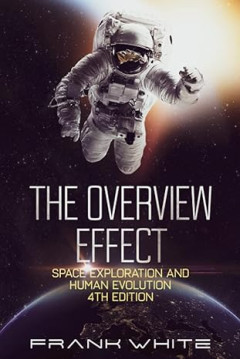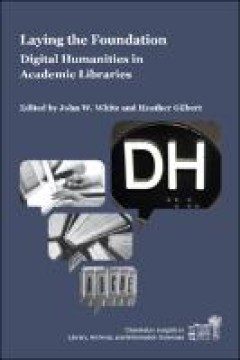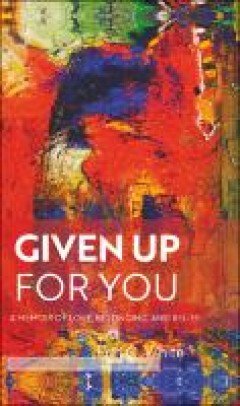Ditapis dengan
E-book Lets Explore Pets
Pets are members of many families and school communities, and many young children are inherently interested in pets. During the preschool years, children come to understand that pets aren’t playthings; they are living creatures that need our care and attention. Pets can be an appealing topic for many reasons. Many children are intrigued by pets, and many educators are eager to share pet-rela…
- Edisi
- -
- ISBN/ISSN
- -
- Deskripsi Fisik
- 46 hlm
- Judul Seri
- -
- No. Panggil
- 636.0887 WHI l
E-book The Saga of Þórður Kakali : The Icelandic Text, with and English Tr…
The thirteenth-century Icelandic text The Saga of Þórður kakali survives today as part of the fourteenth-century compilation The Saga of the Sturlungar. In extant form, The Saga of Þórður kakali is a biography of Þórður kakali Sighvatsson (c. 1210–56) — chief-tain, Norwegian royal retainer, and sheriff — and covers the pe-riods 1242–50 and 1254–56.Consequently, the saga is…
- Edisi
- -
- ISBN/ISSN
- 9781953035271
- Deskripsi Fisik
- 323 hlm
- Judul Seri
- -
- No. Panggil
- 839.6 WHI t
E-book The Persistence of Dance : Choreography as Concept and Material in Con…
Among what some have described as a domination of dance and chore-ography within the recent performative turn in the museal sector, defini-tions, specificities, and careful framing have often been lacking.5 Various iterations of dance in the gallery have included adaptations of stage-based works for the new context, works made for proscenium theaters located in multi-arts centers (such as t…
- Edisi
- -
- ISBN/ISSN
- 9780472903894
- Deskripsi Fisik
- 375 hlm
- Judul Seri
- -
- No. Panggil
- 792.78 BRA t
E-book How It Works: Amazing Cutaways 1st Edition
- Edisi
- -
- ISBN/ISSN
- -
- Deskripsi Fisik
- 148 halaman, ilus.
- Judul Seri
- -
- No. Panggil
- 001.0 PEE h
- Edisi
- -
- ISBN/ISSN
- -
- Deskripsi Fisik
- 148 halaman, ilus.
- Judul Seri
- -
- No. Panggil
- 001.0 PEE h
E-book How it Works Book of Amazing Vehicles Volume 1
Since the invention of the wheel, humankind has been driven to improve the way we travel, always trying to better, faster, and stronger. The How It Works Book of Amazing Vehicles exhibits the finest inventions in the world of transport, documenting iconic vehicles throughout history and providing a sneak peek at what is to come in the future. From the first Ford to the fastest of fighter jets, …
- Edisi
- -
- ISBN/ISSN
- 9781785460982
- Deskripsi Fisik
- 180 halaman, ilus.
- Judul Seri
- -
- No. Panggil
- 629.24 WHI h
E-book History of Alchemy
- Edisi
- -
- ISBN/ISSN
- -
- Deskripsi Fisik
- 132 halaman, ilus.
- Judul Seri
- -
- No. Panggil
- 540.1 MAD h 002892-eB-0122
- Edisi
- -
- ISBN/ISSN
- -
- Deskripsi Fisik
- 132 halaman, ilus.
- Judul Seri
- -
- No. Panggil
- 540.1 MAD h 002892-eB-0122
E-book How It Works: Book Of The Human Brain, 12th Edition
The human body is truly an amazing thing. Capable of awe-inspiring feats of speed and agility, while being mind-blowing in complexity, our bodies are unmatched by any other species on earth. In this new edition of the Book of the Human Body, we explore our amazing anatomy in fine detail before delving into the intricacies of the complex processes, functions and systems that keep us going. For i…
- Edisi
- -
- ISBN/ISSN
- -
- Deskripsi Fisik
- 164 halaman, ilus.
- Judul Seri
- -
- No. Panggil
- 611 MAR w

E-book The Overview Effect: Space Exploration and Human Evolution, 4rd Edition
More than three decades ago, Frank White coined the term “Overview Effect” to describe the cognitive shift that results from the experience of viewing the Earth from space and in space, from orbit or on a lunar mission. He found that with great consistency, this experience profoundly affects space travelers’ worldviews—their perceptions of themselves, our planet, and our understanding o…
- Edisi
- -
- ISBN/ISSN
- 9798735748458
- Deskripsi Fisik
- 618 halaman
- Judul Seri
- -
- No. Panggil
- 520 WHI t
E-book How It Works: Book of Amazing Answers to Curious Questions, Volume 02-12
- Edisi
- -
- ISBN/ISSN
- 9781908955746
- Deskripsi Fisik
- 212 halaman, ilus.
- Judul Seri
- -
- No. Panggil
- 001.0 ASA h
- Edisi
- -
- ISBN/ISSN
- 9781908955746
- Deskripsi Fisik
- 212 halaman, ilus.
- Judul Seri
- -
- No. Panggil
- 001.0 ASA h
E-book The Night Circus
The man billed as Prospero the Enchanter receives a fair amount of correspondence via the theater office, but this is the first envelope addressedto him that contains a suicide note, and it is also the first to arrive carefully pinned to the coat of a five-year-old girl. The lawyer who escorts her to the theater refuses to explain despite the manager’s protestations, abandoning her as quickly…
- Edisi
- -
- ISBN/ISSN
- 9780385534642
- Deskripsi Fisik
- 168 hlm
- Judul Seri
- -
- No. Panggil
- 823 MOR t
E-Book Visnu-Narayana: Changing Forms and the Becoming of a Deity in Indian R…
The contributions collected in this volume deal with the complex history of the Indian deity Vi??u-N?r?yana. This conception of God evolved in various traditions in India, especially in South India, during the first millennium CE. The history of this development is reconstructed here by various means, including philological exegesis, the history of ideas, and iconographic evidence.
- Edisi
- -
- ISBN/ISSN
- -
- Deskripsi Fisik
- 502 halaman
- Judul Seri
- -
- No. Panggil
- 294.5 SCH v

E-Book Laying the Foundation
Laying the Foundation: Digital Humanities in Academic Libraries examines the library’s role in the development, implementation, and instruction of successful digital humanities projects. It pays special attention to the critical role of librarians in building sustainable programs. It also examines how libraries can support the use of digital scholarship tools and techniques in undergraduate e…
- Edisi
- -
- ISBN/ISSN
- 9781557537515
- Deskripsi Fisik
- 214
- Judul Seri
- -
- No. Panggil
- 027 WHI l

E-Book Given Up for You: A Memoir of Love, Belonging, and Belief
In this candid and revelatory memoir, Erin O. White shares her hunger for both romantic and divine love, and how these desires transformed her life. In the late 1990s, she spent Saturday nights with her girlfriend and Sunday mornings in Catholic confirmation classes. But when the Church closed its doors to her, she was faced with a question: What does a lesbian believer do with her longing for …
- Edisi
- -
- ISBN/ISSN
- 9780299318291
- Deskripsi Fisik
- 205 halaman
- Judul Seri
- -
- No. Panggil
- 306.77 WHI g
E-book Cultural & Heritage Tourism : a Handbook for Community Champions
With many hundreds of historic sites sprinkled throughout the Yukon, there’s ample opportunity for visitors to delve into its colourful past. The challenge is to entice travellers, many passing quickly on their way to Alaska, to stop and experience as many as possible. Yukon’s culture and heritage come to life through roadside historic sites and unmarked graves, and major attractions and mu…
- Edisi
- -
- ISBN/ISSN
- 9780772666048
- Deskripsi Fisik
- 88 hlm
- Judul Seri
- -
- No. Panggil
- 910.2 WHY c
E-book Understanding Genetics
Understanding the underlying concepts of human genetics and the role of genes, behavior, and the environment will be important to appropriately collecting and applying genetic information and technologies during clinical care. This chapter provides some fundamental information about basic genetic concepts including cell structure, the molecular and biochemical basis of disease, major types of g…
- Edisi
- -
- ISBN/ISSN
- -
- Deskripsi Fisik
- 88 hlm
- Judul Seri
- -
- No. Panggil
- 576 BUR u
E-book The land of footprints
Books of sporting, travel, and adventure in countries little known to the average reader naturally fall in two classes-neither, with a very few exceptions, of great value. One class is perhaps the logical result of the other. Of the first type is the book that is written to make the most of far travels, to extract from adventure the last thrill, to impress the awestricken reader with a ful…
- Edisi
- -
- ISBN/ISSN
- -
- Deskripsi Fisik
- 258 hlm; 0.5 mb
- Judul Seri
- -
- No. Panggil
- 823 WHI t
E-book The mountains
Six trails lead to the main ridge. They are all good trails, so that even the casual tourist in the little Spanish-American town on the seacoast need have nothing to fear from the ascent. In some spots they contract to an arm's length of space, outside of which limit they drop sheer away; elsewhere they stand up on end, zigzag in lacets each more hairraising than the last, or fill to demo…
- Edisi
- -
- ISBN/ISSN
- -
- Deskripsi Fisik
- 258 hlm; 0.4 mb
- Judul Seri
- -
- No. Panggil
- 823 WHI t

ISAAC NEWTON: Kisah tentang seorang matematikawan besar yang berhasil menguba…
- Edisi
- cet. 1
- ISBN/ISSN
- 979-511-272-4
- Deskripsi Fisik
- 96 hlm; illus;14 x 21 cm
- Judul Seri
- -
- No. Panggil
- 925 WHI i
- Edisi
- cet. 1
- ISBN/ISSN
- 979-511-272-4
- Deskripsi Fisik
- 96 hlm; illus;14 x 21 cm
- Judul Seri
- -
- No. Panggil
- 925 WHI i
 Karya Umum
Karya Umum  Filsafat
Filsafat  Agama
Agama  Ilmu-ilmu Sosial
Ilmu-ilmu Sosial  Bahasa
Bahasa  Ilmu-ilmu Murni
Ilmu-ilmu Murni  Ilmu-ilmu Terapan
Ilmu-ilmu Terapan  Kesenian, Hiburan, dan Olahraga
Kesenian, Hiburan, dan Olahraga  Kesusastraan
Kesusastraan  Geografi dan Sejarah
Geografi dan Sejarah